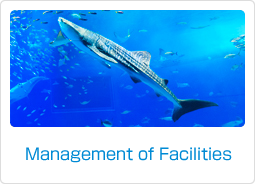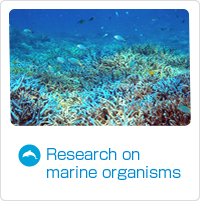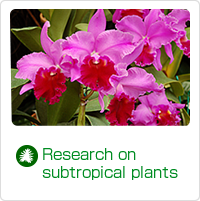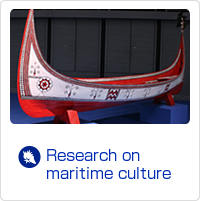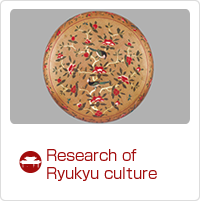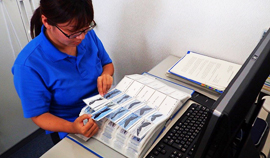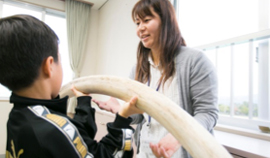- Home
- Okinawa Churashima Foundation Research Institute
- Studies of Marine Animals
- Surveys of the humpback whale

Research on marine organisms
Surveys of the humpback whale

Humpback whales travel to areas of Russia and Alaska to feed during summer and in winter they migrate to Okinawa, the Ogasawara Islands and Hawaii to breed and to raise their young.
Every year from the end of December though to the beginning of April, whale watching of humpback whales takes place off the coast of Okinawa. The humpback whales have become an important resource that supports the tourism industry during the winter season.
Our foundation is working together with the local people along with domestic and foreign researchers to study the ecology and resource conditions of these humpback whales.
ザトウクジラ調査応援ページ
Latest Information
Jan. 14, 2023
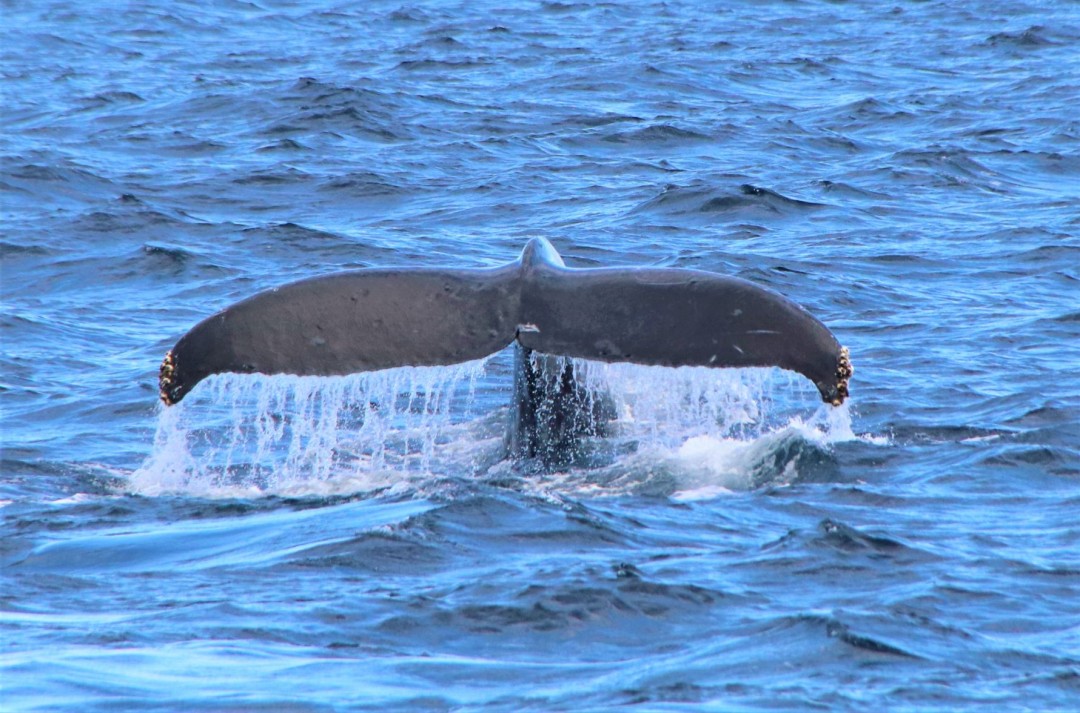
A humpback whale lifiting it's tail fin to dive.
【Today's reports on humpback whales】
Kerama : -
Motobu : 3 groups, 5 whales (0 pair of mother & calf)
Naha : 7 groups, 13 whales (1 pair of mother & calf) *Provided info
Surveys of humpback whales have stated for this year! Our foundation conducts surveys in the waters around Okinawa Islands every year for more than 30 years now. The information in Naha area was provided from Southern Central Okinawa Whale Watching Association in Naha. We really appreciate their cooperation. We are planning to update this page with information every time we conduct humpback whale surveys around Okinawa. So stay tuned!
What is a Humpback Whale?
Humpback whales are one of the largest species of baleen whale, they range in length from 12 to 14 meters and weigh around 30 to 40 tons. Bumps on their head and long pectoral fins are their distinctive features. They are known to inhabit the seas around the world and seasonally migrate for feeding and breeding. During summer they feed in the cold waters of the North Pacific such as Russia and Alaska, then during winter they migrate to Hawaii, Mexico, Okinawa and the Ogasawara Islands to breed and to raise their young in the warmer waters.
Every year the humpback whales are observed from around the end of December through to the beginning of April by the whale watching industries that are flourishing in the Kerama Islands, on the Motobu Peninsula and near Naha City.

Identifying individuals by their flukes (a whale’s tail)
The forms and patterns on the ventral surfaces of the flukes of a humpback whale are like fingerprints and vary individually. There are white flukes, black flukes, flukes with white and black mixed. Even if there are the same color the edge of the tail could be jagged which makes every individual distinct. By using this feature, identifying individual humpback whales with photographs of their flukes is now being conducted around the world.
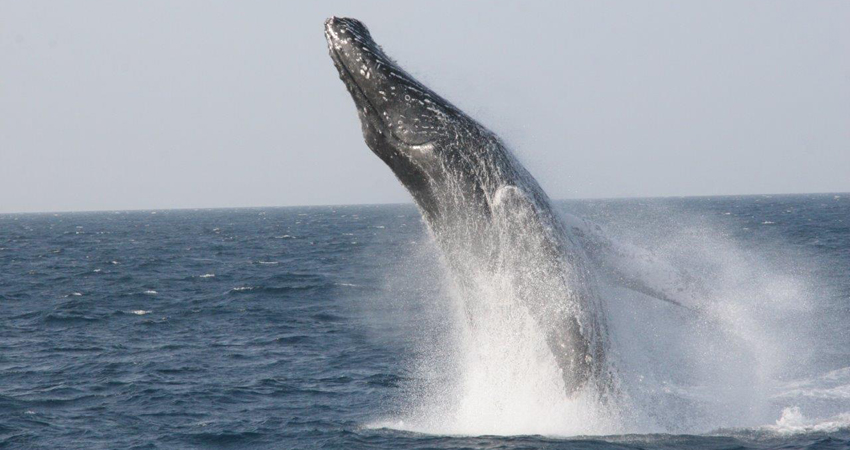

Surveys by the Okinawa Churashima Foundation on Humpback Whales
The foundation has been and is conducting surveys of Humpback Whales in order to understand their ecology and resource condition for more than 30 years.
In all this time we have identified approximately 1,900 humpback whales passing by the Kerama Islands and the Motobu Peninsula by identifying the individuals using gathered photographs (2023 Present Time).
With this information we can estimate the number of humpback whales migrating and investigate their migration route. This is done by cooperating with domestic and foreign researchers along with the local people. We are also working to disseminate the survey results to the local whale watching industries and to children.
- Okinawa Churashima Foundation Research Institute
- TEL:0980-48-2266( weekday 9:00 am - 6:00 pm )
FAX:0980-48-2200
Copyright (c) 2015 Okinawa Churashima Foundation. All right reserved.













